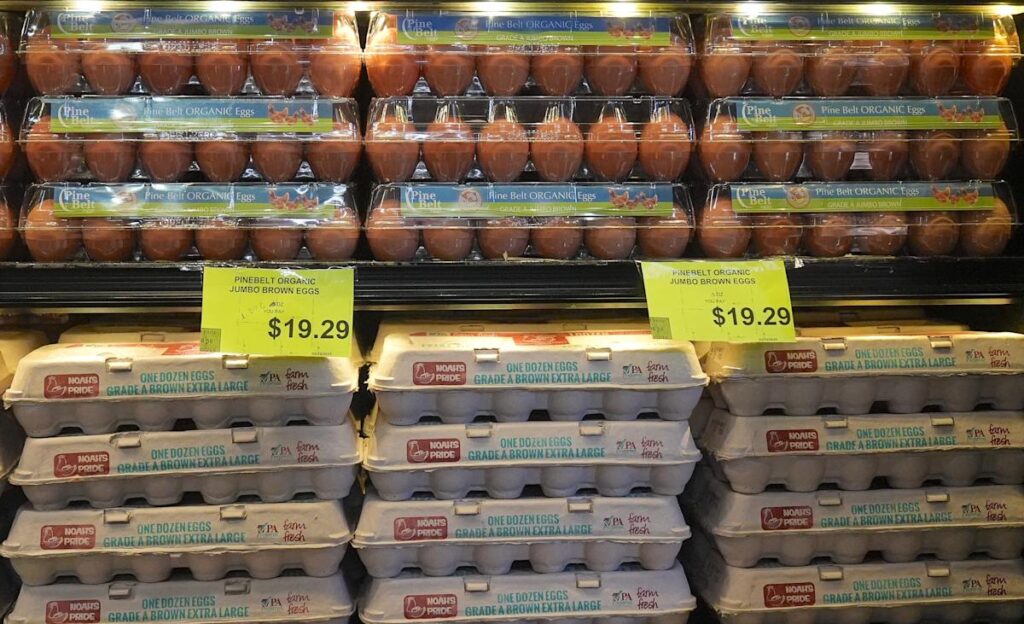Egg prices continue to hit new heights as customers gawk at the inflated prices.
According to key data from the Bureau of Labor Statistics, the cost of eggs rose 58.8% year over year in February. Prices are up 12.5% month over month. Overall grocery inflation is up 1.9% compared to a year ago.
Nationally, a dozen large Grade A eggs cost nearly $5.90 in February, a new record high. The previous high was set at $4.95 this January; it was roughly $3 in February 2024.
The highly pathogenic avian influenza (HPAI), commonly referred to as bird flu, is behind the ever-increasing prices.
«When a laying flock contracts the virus, the entire flock either dies or is euthanized to control the spread of the highly contagious disease,» Kevin Bergquist of Wells Fargo told Yahoo Finance.
Read more: $6 eggs and other inflation pain points: Here’s where prices are rising
He added, «Often, laying hen operations are concentrated, with well over a million birds located on a single site. So, if [the] bird flu hits a particular location, that whole flock is infected and lost, which drives up egg prices.»
Other breakfast foods are rising in price as well, compared to the same period a year ago.
The price of bacon was up 2.7%, coffee was up 6%, and frozen non-carbonated juices and drinks such as orange juice were up nearly 7%.
Some relief could be on the way for egg lovers, as prices have decreased over the past week.
«The CPI is sort of backward-looking,» Texas A&M University professor David Anderson told Yahoo Finance. Now, prices are declining as shoppers with sticker shock buy fewer eggs at the store, increasing the available supply.
According to the USDA, the inventory of shell eggs jumped 5.2% compared to the prior week.
But a real recovery will take longer, since «a company can’t order a new flock of a million hens and get that overnight,» Bergquist noted. It also takes «several months to sterilize the layer facilities and repopulate the location» with young hens.
And if outbreaks of the bird flu continue over the next few months, which tends to happen during this time of the year, it will restart the same cycle and lead to ongoing higher prices.
The new administration has said it’s looking for ways to deliver on campaign promises to lower prices for Americans.
In late February, United States Agriculture Secretary Brooke Rollins introduced a five-part strategy to combat avian flu outbreaks in a Wall Street Journal op-ed, alongside a $1 billion plan to tackle the crisis.
Story Continues


